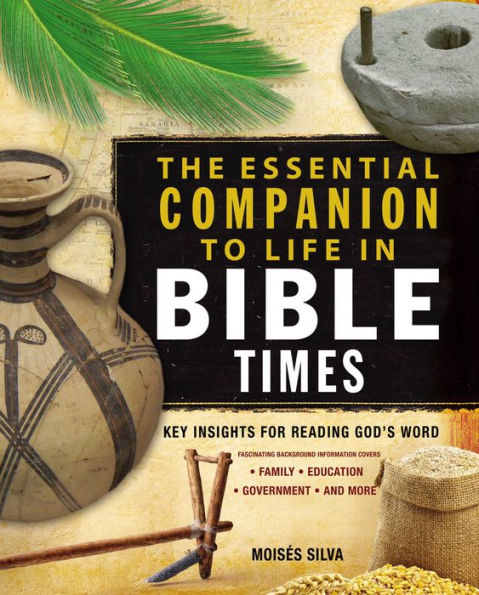From the customs of religious life to common domestic and social practices, The Essential Companion to Life in Bible Times is your quick and reliable guide to the cultural backgrounds that formed the backdrop of biblical writings.
Unlike many similar works, this Bible companion is organized thematically, making it easier to scan over broad subjects at one go. Topics include:
- The family—describes what the Bible says about children and childbirth, education, the different roles performed by men and women; as well as topics like sex, marriage, divorce, old age, death, and burial.
- The household—from house architecture and furniture to topics of everyday survival, such as food and its preparation, water access, and how illnesses were handled.
- Work life—discusses major Old Testament occupations and trades, from livestock and woodworking to commerce.
- Social life—includes explanations of population, the calendar, economics, crafts, travel and trade, dress, and music.
- Government—how different aspects of governance were handled in towns, larger cities, and the state, including the roles of the king, elders, and officials.
- Israel's religious life—from the use of high places and altars, to the importance of the tabernacle and the temple, to the role of priests and Levites.
Between the brief introductions you might find in a study Bible and the overwhelming amount of detail in an exhaustive reference handbook, Essential Companion to Life in Bible Times strikes the perfect balance of manageable information, giving any student of Scripture the keys to unlock commonly misunderstood passages as well as deepen your appreciation of even the most familiar Bible stories.
From the customs of religious life to common domestic and social practices, The Essential Companion to Life in Bible Times is your quick and reliable guide to the cultural backgrounds that formed the backdrop of biblical writings.
Unlike many similar works, this Bible companion is organized thematically, making it easier to scan over broad subjects at one go. Topics include:
- The family—describes what the Bible says about children and childbirth, education, the different roles performed by men and women; as well as topics like sex, marriage, divorce, old age, death, and burial.
- The household—from house architecture and furniture to topics of everyday survival, such as food and its preparation, water access, and how illnesses were handled.
- Work life—discusses major Old Testament occupations and trades, from livestock and woodworking to commerce.
- Social life—includes explanations of population, the calendar, economics, crafts, travel and trade, dress, and music.
- Government—how different aspects of governance were handled in towns, larger cities, and the state, including the roles of the king, elders, and officials.
- Israel's religious life—from the use of high places and altars, to the importance of the tabernacle and the temple, to the role of priests and Levites.
Between the brief introductions you might find in a study Bible and the overwhelming amount of detail in an exhaustive reference handbook, Essential Companion to Life in Bible Times strikes the perfect balance of manageable information, giving any student of Scripture the keys to unlock commonly misunderstood passages as well as deepen your appreciation of even the most familiar Bible stories.

The Essential Companion to Life in Bible Times: Key Insights for Reading God's Word
144
The Essential Companion to Life in Bible Times: Key Insights for Reading God's Word
144
Product Details
| ISBN-13: | 9780310535447 |
|---|---|
| Publisher: | Zondervan |
| Publication date: | 10/11/2016 |
| Series: | Essential Bible Companion Series |
| Sold by: | HarperCollins Publishing |
| Format: | eBook |
| Pages: | 144 |
| File size: | 10 MB |
